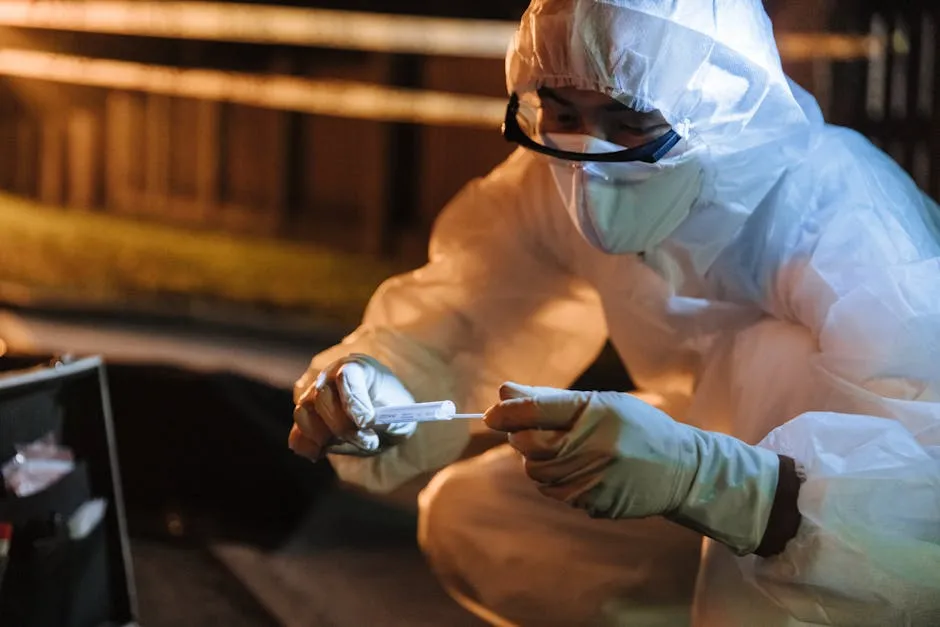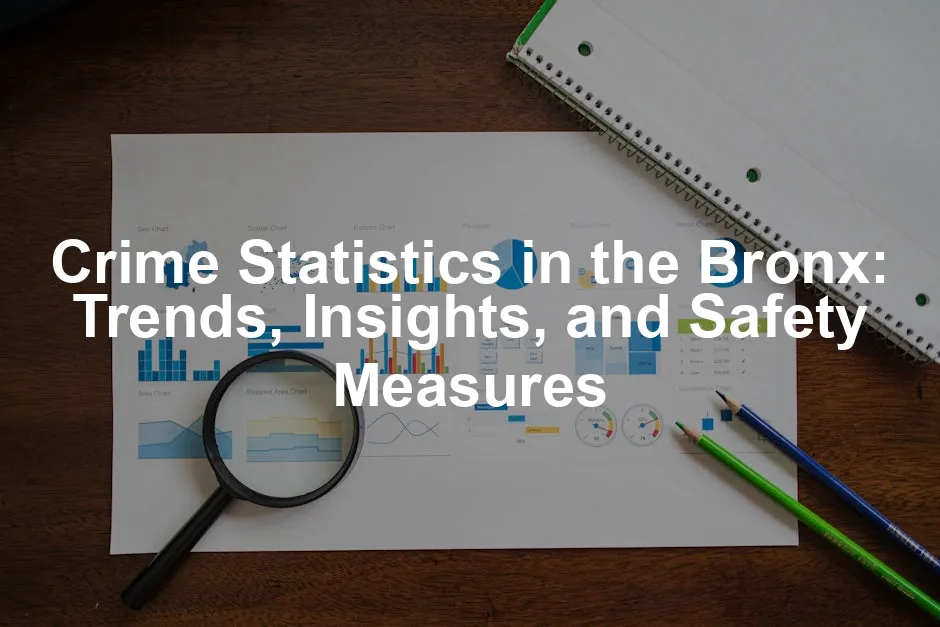Introduction
The Bronx, one of New York City’s five boroughs, is a vibrant hub of culture, history, and diversity. Known as the birthplace of hip-hop and home to the New York Yankees, this borough has faced a complicated reputation regarding crime. While it boasts numerous attractions and a rich cultural landscape, it also grapples with crime rates that are often highlighted in the media.
Understanding current crime statistics is essential for both residents and visitors. It helps them navigate the area with awareness and caution, ensuring safety while enjoying all the Bronx has to offer. This article aims to provide a comprehensive analysis of crime statistics in the Bronx, focusing on trends, comparisons with other areas, and effective safety measures.
In the following sections, we will explore the current crime rates, the types of violent and property crimes prevalent in the Bronx, and how these statistics align with national averages. Additionally, we will discuss community initiatives and law enforcement strategies aimed at improving safety. By the end of this article, readers will gain valuable insights into how to stay safe and informed in this dynamic borough.
Understanding Bronx Crime Statistics
Overview of Crime Rates
The Bronx has a crime rate of 44 per one thousand residents, making it one of the highest in the nation. With more than 98% of communities in New York having lower crime rates, the likelihood of becoming a victim of either violent or property crime is approximately one in 23. This alarming statistic can be daunting for residents and visitors alike.
When we break it down further, the violent crime rate stands at around 11.08 per 1,000 residents, with a one in 90 chance of becoming a victim. The types of violent crimes include assault, robbery, rape, and murder. For property crimes, the rate reaches 32.71 per 1,000 residents, with a one in 31 chance of being a victim. These property crimes typically comprise burglary, larceny, motor vehicle theft, and arson.
While these numbers may paint a grim picture, it’s crucial to understand how they compare to other boroughs in New York City. For instance, the Bronx’s violent crime rates are higher than those in Manhattan and Staten Island but lower than in parts of Brooklyn. Understanding these comparisons can provide valuable context and help residents make informed decisions about their safety.

If you’re looking to dive into the literature that reflects the complexities of society, consider picking up Crime and Punishment by Fyodor Dostoevsky. This classic novel delves into the psyche of crime and morality, offering insights that might just resonate with the socio-economic struggles faced in areas like the Bronx.
Recent polls indicate that the perception of safety in the Bronx can vary significantly. Some residents feel relatively safe, while others express concerns about specific neighborhoods. A survey revealed that 47% of respondents felt “pretty safe,” while 9% reported feeling “not safe” at all. This divide highlights the need for a thorough understanding of crime statistics to navigate the Bronx effectively.
In summary, while crime rates in the Bronx are notably high, awareness and informed decision-making can significantly enhance personal safety. By understanding the landscape of crime in the Bronx, residents and visitors can take proactive measures to protect themselves and their communities.
Recent Trends in Violent Crimes
The Bronx has seen a complex landscape of violent crime trends recently, marked by fluctuations that keep both residents and law enforcement on their toes. Analyzing year-over-year trends gives us a clear picture of where the borough stands.
In 2023, violent crime rates increased by approximately 6% across the Bronx compared to 2022, with notable spikes in certain precincts. The 40th Precinct, which includes neighborhoods like Port Morris and Mott Haven, experienced an overall crime increase of 75%. Within this precinct, burglaries surged from 24 to 42 incidents, and grand larcenies rose by over 35%. This area has witnessed significant changes, prompting increased police presence and community initiatives aimed at restoring safety.
Conversely, the 47th Precinct, located in Woodlawn and Wakefield, saw a remarkable decrease in crime, with a 30.2% drop in overall reported offenses. This precinct’s proactive community policing strategies and active neighborhood watch programs have contributed to this positive trend. Such initiatives emphasize the importance of community involvement in crime prevention.
Focusing on specific violent crimes, the 43rd Precinct reported a staggering 32.8% rise in grand larceny cases, while murder rates decreased slightly. This highlights a shift in crime dynamics, where property crimes like grand larceny are becoming more prevalent than violent offenses such as murder and rape.

Across the Bronx, there’s a growing concern about gun-related violence. The NYPD reported an alarming 22% drop in shootings in 2023, with a total of 313 incidents, down from 402 in 2022. While this statistic is encouraging, it does not overshadow the ongoing struggles with other violent crimes.
In neighborhoods like Fordham, residents have expressed mixed feelings about safety despite these statistics. Anecdotal evidence suggests that while some areas are improving, there remains a pervasive fear of violence that affects daily life. In fact, a recent survey indicated that 47% of Bronx residents felt “pretty safe,” while a significant number still harbored concerns about their neighborhood’s safety.
If you’re looking to explore themes of community resilience, check out A Bronx Tale (DVD). This film encapsulates the struggles and triumphs of life in the Bronx, making it a must-watch for anyone interested in understanding the borough’s spirit.
Another troubling trend is the rise in felony assaults, which increased by 9.7% in 2023. This uptick has sparked debates on the effectiveness of current policing methods and the need for more community-based solutions. Experts argue that enhancing social services and outreach programs may be key to addressing the root causes of violence.

The Bronx also grapples with gang-related activity, contributing to the fluctuations in violent crime. Law enforcement officials are currently focusing on dismantling these gangs, which have historically fueled violence in the borough. Collaborative efforts between local organizations and the NYPD have been initiated to combat these gangs and their impact on community safety.
In summary, while the Bronx has made strides in reducing certain violent crimes, challenges remain. The trends in specific precincts illustrate a tale of two boroughs—some areas show significant progress, while others struggle with increasing crime rates. Continuous community engagement and proactive law enforcement efforts will be essential in navigating this complex landscape, ensuring that the Bronx becomes a safer place for all its residents.
Bronx vs. Similar Sized Cities
The Bronx often finds itself compared to other urban areas across the United States. With a crime rate of 44 per thousand residents, it’s a tough place, but how does it stack up against similar-sized cities? Let’s take a humorous yet critical look at the numbers.

When comparing the Bronx to cities like Philadelphia, Baltimore, and Detroit, it appears that the Bronx is not alone in its struggle with crime. Philadelphia, for instance, has a violent crime rate of around 911 per 100,000 residents, while Baltimore tops that with a whopping 1,858 per 100,000. In contrast, the Bronx’s violent crime rate sits at about 1,108 per 100,000. So, while the Bronx may have its issues, it’s not exactly the king of chaos.
But what factors contribute to these differences? One significant element is socio-economic conditions. The Bronx has a poverty rate hovering around 27.7%, which tends to breed crime. In cities like Detroit, where the poverty rate is similarly high, crime rates reflect this struggle as well. The shared history of economic hardship in these areas creates fertile ground for crime.
If you’re someone who enjoys understanding the power dynamics in society, The 48 Laws of Power by Robert Greene may be the book for you. It’s a guide to navigating power struggles that can often be seen in the dynamics of urban life.
Another factor to consider is the availability and effectiveness of law enforcement. The Bronx is patrolled by the NYPD, which has a robust presence. However, the sheer size of the borough means that officers are stretched thin. In cities like Philadelphia, community policing efforts have had mixed results, impacting crime differently. Yet, it’s essential to recognize that while police presence matters, it’s not the only solution. Community engagement often plays a pivotal role in reducing crime.

Neighborhood dynamics also come into play. Areas with strong community ties and active neighborhood watch groups tend to report lower crime rates. For instance, regions in the Bronx such as Riverdale and Morris Park boast lower crime rates compared to their neighboring precincts. This reflects the idea that safety isn’t just about police presence but about community cohesion and vigilance.
In terms of property crime, the Bronx sees rates around 32.71 per 1,000 residents. This might feel like a lot, but let’s look at Baltimore again, where property crime rates are almost double. What’s the takeaway? The Bronx is a tough place, but it’s navigating challenges that many cities share.
However, it’s not all doom and gloom. The Bronx has made significant strides in certain areas. Recent initiatives have led to a decline in specific crime types, showcasing that change is possible. Programs aimed at improving community relations and addressing root causes of crime can yield results.

So, while the Bronx has its share of crime, it’s essential to consider the broader context. The challenges faced by the Bronx are echoed in other cities across the nation, making it a part of a larger narrative. Understanding these nuances can help residents and potential movers make informed decisions about safety and community involvement. Despite its reputation, the Bronx remains vibrant, with neighborhoods filled with culture, history, and a ton of potential. As it continues to address its crime issues, the hope is that the Bronx will not just be known for its challenges but also for its resilience and community spirit.
FAQs
What areas in the Bronx are considered the safest?
If you’re looking for a tranquil stroll or a cozy meal, consider heading to neighborhoods like Riverdale, Morris Park, or Bedford Park. These areas have lower crime rates and are often regarded as family-friendly havens. Riverdale, with its leafy streets and scenic views, feels more suburban than urban. Morris Park boasts a tight-knit community feel, making it perfect for those seeking a quieter lifestyle. Meanwhile, Bedford Park is known for its vibrant local culture, complete with charming shops and eateries. While no place is entirely free from crime, these neighborhoods shine as safer options for both residents and visitors alike.
How can I stay safe while visiting the Bronx?
Visiting the Bronx can be a delightful experience, but safety should always be a priority. Always stay aware of your surroundings, especially in crowded places. It’s best to travel in groups and avoid poorly lit streets at night. Keep your belongings secure and don’t flash valuables around—this isn’t a movie scene, after all! Using public transport? Stick to well-trafficked routes and be mindful of your belongings. Familiarize yourself with local emergency numbers and be cautious when interacting with strangers. Most importantly, trust your instincts—if something feels off, don’t hesitate to move to a safer location.
Are crime rates in the Bronx increasing or decreasing?
Recent data indicates a mixed bag regarding crime rates in the Bronx. While overall crime rates showed a slight increase of about 6% in 2023 compared to the previous year, there are some bright spots. Notably, shootings and murders have decreased by significant margins, offering a glimmer of hope amid the statistics. However, property crimes, particularly grand larcenies, have surged. This complex landscape reflects ongoing community efforts and law enforcement initiatives. Ultimately, it’s crucial to stay informed and engaged with local safety measures as the Bronx continues to navigate its unique challenges.
What should I do if I witness a crime?
Witnessing a crime can be shocking, but knowing how to react is essential. First, ensure your own safety—avoid confrontation and move to a secure location. Once safe, call 911 to report the incident and provide clear, concise details to the operator, including your location and any descriptions of suspects or vehicles involved. If it’s safe to do so, gather information that might help law enforcement, like noting the event’s time and any involved parties. Avoid posting details on social media until authorities are informed; this can hinder investigations. Finally, consider speaking with law enforcement after the incident to share any insights you may have.
If you’re interested in understanding the cultural richness of the Bronx, consider checking out The Bronx: A History by Gerald J. McGowan. This book provides a fascinating insight into the borough’s evolution, capturing the essence of its communities.
Please let us know what you think about our content by leaving a comment down below!
Thank you for reading till here 🙂
All images from Pexels




